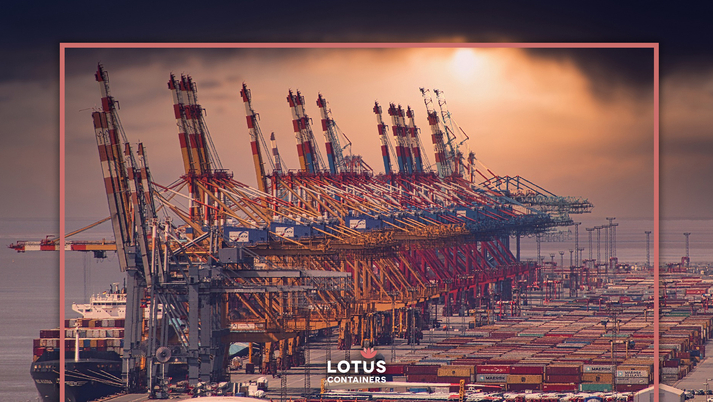Adopting supply chain resilience-building strategies helps the shipping industry and world trade achieve a competitive advantage for business continuities. Resilience has become the supply chain priority for businesses to manage an efficient supply chain. It also boosts intermodal transportation to quickly supply cargo containers to different areas. Uninterrupted disruptions, natural disasters, shrinkage in product lifecycle and unpredictable markets are significant causes of threats in the supply chain. Therefore, the organisations manifest resilience in the supply chain to confront important unforeseen events.
What is Supply Chain Resilience?
It refers to an organisation’s ability to deal with disruptions or threatened areas through an agile approach. Modern supply chain technologies help build a process that helps anticipate and respond to the risk. Building resilience in supply chains can create opportunities for the business to avoid trouble to be competitive in the current market situation.
What does a Resilient Supply Chain Look Like?
Resilience in the supply chain can look different for various industries. Pandemic has created pressure on businesses to prospect vulnerabilities and risks and undertake resilient strategies for the effective supply chain management. The pandemic’s crucial impact on supply chains and building a secure and resilient supply network helps an organisation survive despite future uncertainties. Supply chain risk management has become pertinent concerning efficient and flexible operations and inventory management.
Strategies for Building Resilient Supply Chain
We help you to get through some of the strategies:
Identify Vulnerabilities and Redundancies
Identifying vulnerabilities within the supply chain is one of the effective supply chain resilience-building strategies through risk assessment. Lack of visibility of the supply chain, high dependence on suppliers and non-traceability are significant vulnerabilities that the cargo container suppliers and organisations can face.
Supplier Network Diversification
Recognising suppliers’ needs and expectations can be a resilient supply chain strategy for creating a sustainable supply chain. Agreeing to suppliers’ requirements and understanding their mindset can help you maintain resilience by creating a solid connection. Multiple sourcing can make it possible to produce products from various locations. Nearshoring is another diversification technique that can help businesses shorten the cycle by bringing the finished product closer to the end consumer.
Inventory and Capacity Buffers
The resilient supply chain can be built through inventory buffers, also regarded as “safety stock” for meeting ongoing customer demands. It means you can deal with the situation aggressively in the background while serving customers. For example, leading shipping container companies and other companies use capacity buffers while making growth to new areas by creating a contract with manufacturers. It can take place by using underutilised facilities and preparing safety stock requirements to enhance resilience.
Distributing Inventory in Multiple Locations
With the impact of Covid-19, sourcing from a single site can pose a lot of supply chain disturbance. This approach is not viable for the long term when only sourcing from a single location. Sourcing from different backgrounds can enhance your geographical reach and speed up customer fulfilment times. When customers can get products from nearby areas, it can reduce container shipping for them which can help maintain resilience in the supply chain during a hard time.
Platform, Product or Plant Harmonization
Harmonised plant technology promotes more regional networks to create an efficient supply chain resilience. Products can quickly seamlessly move within the web. Making a standardised form of multiple products and simplifying sourcing policies can turn on resiliency. Scaling the right technology can help develop a harmonisation to improve product leads and reduce wait times.
How to Measure Supply Chain Resilience?
An organisation needs to measure supply chain resilience-building strategies to find a way to deal with manufacturing delays and continuously meet customers’ expectations. Three matrices can be used for measuring supply chain resilience:
- Time-to-survive means determining the time for resuming operations after the disruption.
- Time-to-recover is the metric for identifying a business’s time to recover from the losses by clearing backlogs.
- Time-to-thrive is associated with the evaluation of the company’s position after it has successfully recovered from the crisis.
The Supply Chain’s Effect on Cross-Border Commerce
Cross-border e-commerce has increased imports and exports, leading to international trade. However, the supply chain in the global platform is much more complicated than its traditional counterparts. The logistics, inventory management and legal obstacles in supply chain performance are critical issues in cross-border commerce. This calls for supply chain risk assessment by building supply chain resilience for future crises that can improve the efficiency of international trade.
How to up Resiliency through Decentralization?
Supply chain resilience 2022 accounts for decentralised economic globalisation. As a result, the suppliers are scattered in different locations for a more extended period than it requires mutual trust to exchange amongst them efficiently. This reorganising of the supply chain is possible by using blockchain technology that will make possible improvements in supply chain resilience.
Instilling Flexibility through AI
Artificial Intelligence is changing the face of the supply by predicting multiple product segments and using master data to understand the broader value chain fully. The purpose is to ensure that plans are executed and adapt to variable effects such as production stoppages and demand shocks. Companies can instil flexibility through AI system integration and implementation to make the supply chain resilient, thereby leading to operational flexibility.
Thus, we see adopting supply chain resilience strategies through creativity and the latest technologies can help businesses pass situations. Surviving operational disruption can be difficult, especially when the company is not agile. However, responding to the latest market trends and stepping toward risk reduction strategies can help businesses quickly recover.
LOTUS Containers is a leading shipping container supplier that helps you buy new and old containers in all types and dimensions by following the latest trends in supply chain and world trade. We help you purchase flat rack containers, open-top containers, and other types with ease and affordability.
Looking for 20ft and 40ft shipping containers for sale in California? We help you get them all with flexibility and feasibility worldwide.




